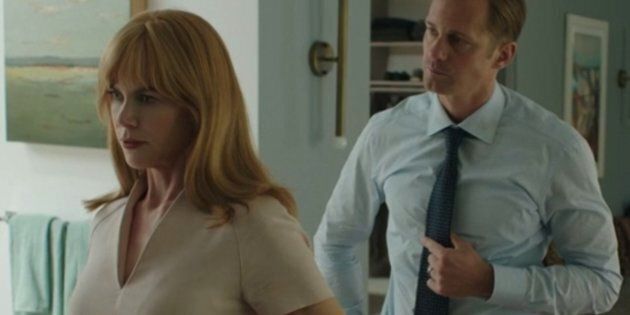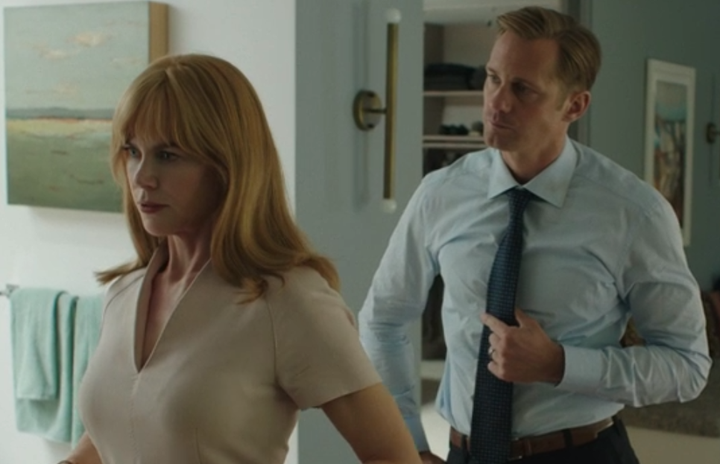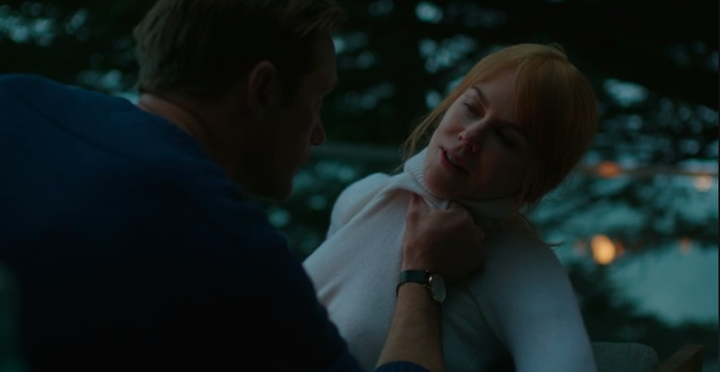

HBO’s miniseries “Big Little Lies” is a story about the complex inner lives of privileged women, wrapped up in a murder mystery set in a wealthy seaside town. Amidst the stunning vistas and unraveling whodunit plot line, viewers are witnessing something rarely seen on screen: A thoughtful portrait of an abusive relationship. (Note: Spoilers ahead.).
The show’s abuse plot line centers around Celeste, played by Nicole Kidman, a lawyer who gave up her career to raise twin boys. To the outside observer, her life appears picture-perfect: She has a stunning home, healthy children, and a gorgeous husband whose adoration for her is obvious to all. But as the show progresses, the facade crumbles. Celeste is deeply worried about her marriage. She uses the word “volatile” to describe it, but the more accurate label is abusive.
While her charismatic husband Perry, played by Alexander Skarsgård, can sometimes treat her “like a goddess,” he is more often possessive and controlling. He is quick to physical aggression, choking, slapping and throwing her against the wall. Celeste hits back at least once in an act of self-preservation, bucking the traditional role of passive victim.
Their fights typically conclude with rough sex scenes, which are ambiguously consensual. It’s unclear to the viewer (and perhaps to Celeste herself) if she is engaging in sex because she desires Perry, or because she feels she has no choice. Afterwards, he offers apologies and gifts, at one point anointing her bruised body with a sparkling necklace.
In the most recent three episodes of “Big Little Lies,” (episodes 3, 4 and 5), the couple goes to marriage counseling. The resulting scenes offer a profoundly nuanced look inside an abusive relationship and the complicated landscape a couple in a similar situation might navigate.
In the couple’s first therapy session, Celeste, looking extremely uncomfortable, talks about their issues in the plural, constantly glancing at Perry for approval. “I just think things can get a bit volatile,” she explains. “We fight a lot, we yell, we scream. We just have a lot of anger that we need some help controlling.”
Of course, it is not really her anger that needs controlling, it is his. At its core, domestic violence is about maintaining power and control over another person. It is clear that Perry’s need to dominate Celeste is at the root of their problems.
Later, she sees the therapist alone. When she is asked directly about the abuse, she continues to insist she is equally at fault. “We both become violent sometimes, I take my share of the blame,” she says. “I’m not a victim here.”
It is a startling moment. As she asserts her autonomy, Celeste unabashedly rejects the label of victim. It’s debatable if she does this because she has internalized negative stereotypes about the type of people who end up in abusive relationships ― weak, damaged women, not independent, accomplished ones like herself ― or if she truly does not see herself as abused.
